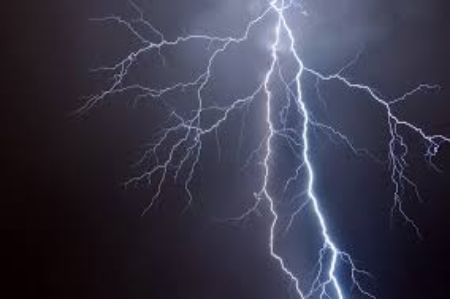Fractals
Fractals are complex geometrical shapes that are composed of smaller replicas of themselves which in turn are composed if even smaller copies of themselves and so on infinitely. Hence a simple process is used repeatedly to create a very complex structure.
Fractals are everywhere in nature and in mathematics.
Watch the following video for some examples and to find out how to create fractals.
Can you think of other fractals in nature?
Fractals aren’t found just in living things.
Consider lightning. These things go by so fast they look like a straight line; however, they actually have beautiful branching patterns, like in the image below.

Now let’s explore some of the fractals mentioned in the video.
Sierpinski triangles are one of the simplest fractals; made by repeatedly connecting the midpoints of each side of the triangle to form four separate triangles before removing the triangle in the center.
Experiment with the Sierpinski triangle below by ticking the boxes on the left side of the applet.
Von Koch’s snowflake curve is another famous fractal that is simple to create.
Move the dot along the line on the left side of the triangle below to create an increasingly more detailed snowflake.
Challenge
Try creating your own fractal.
You can do this by choosing a simple step to follow and repeating this multiple times.
For example, by branching a single line into two smaller lines repeatedly to create a tree, such as the one I have created below.
I hope you had fun exploring fractals and continue your exploration.
There is so much more to learn about fractals and they can get so much more complex then you can imagine.